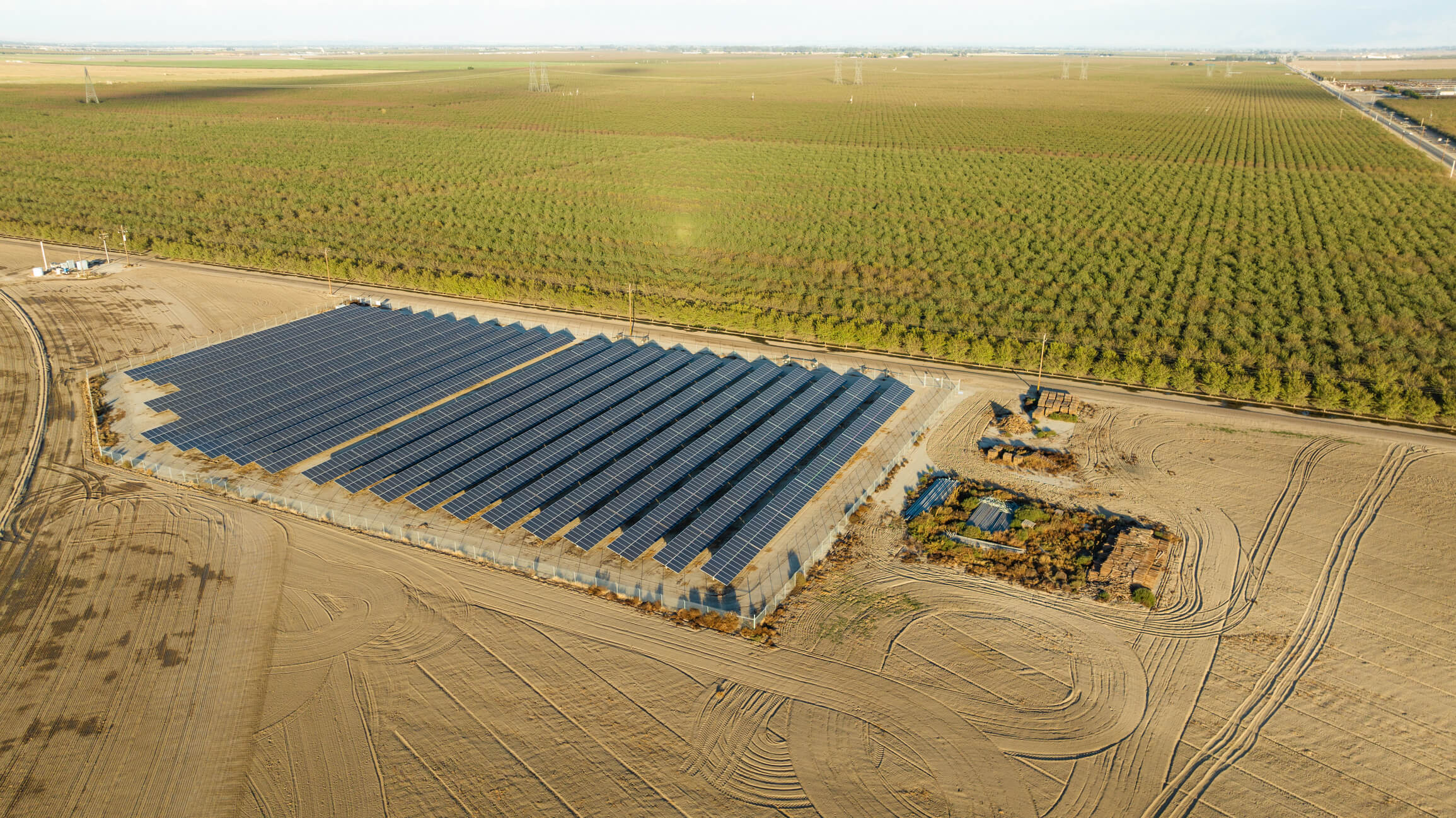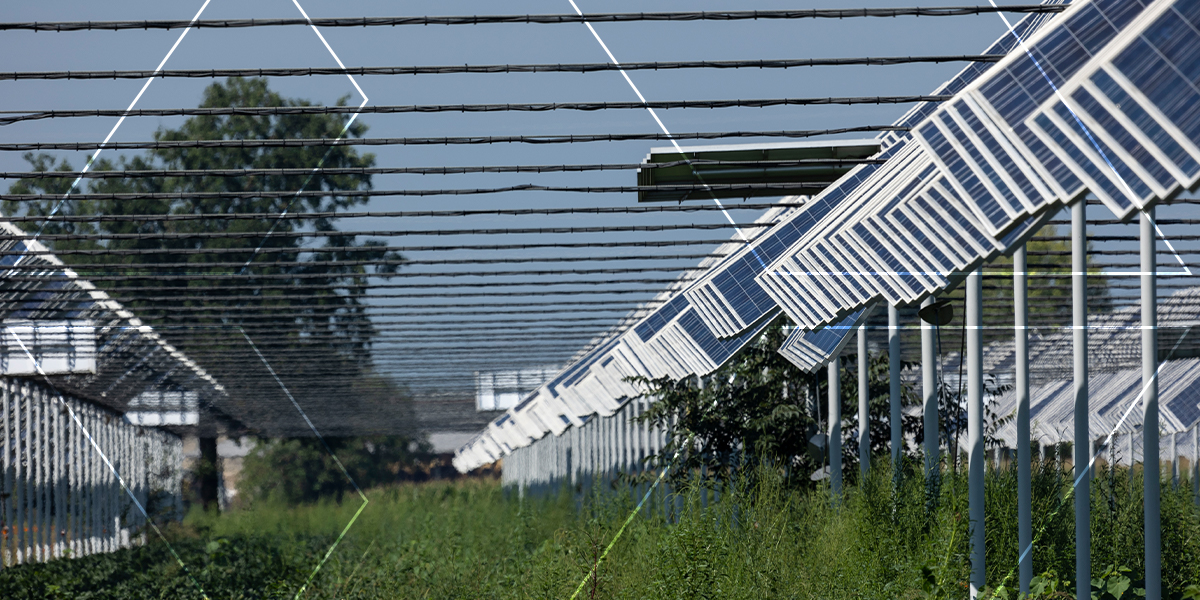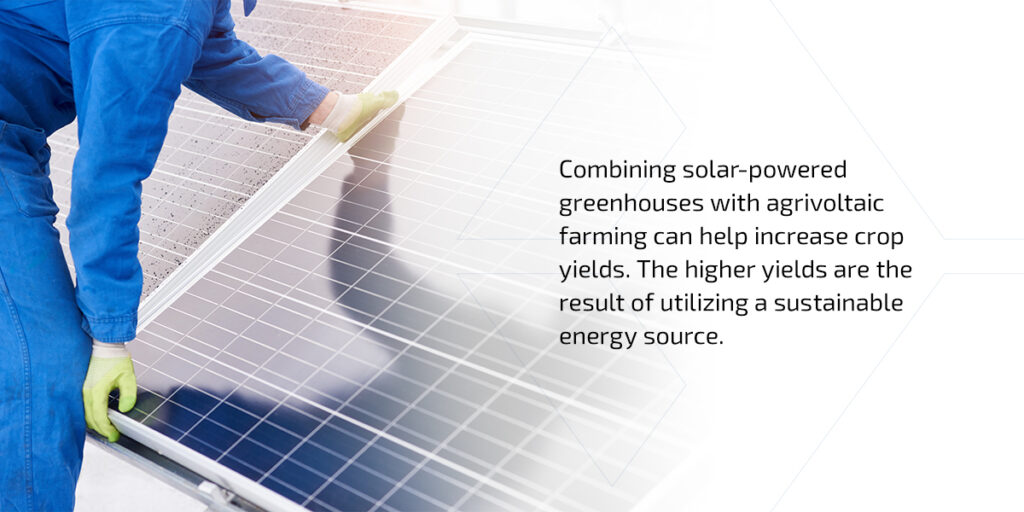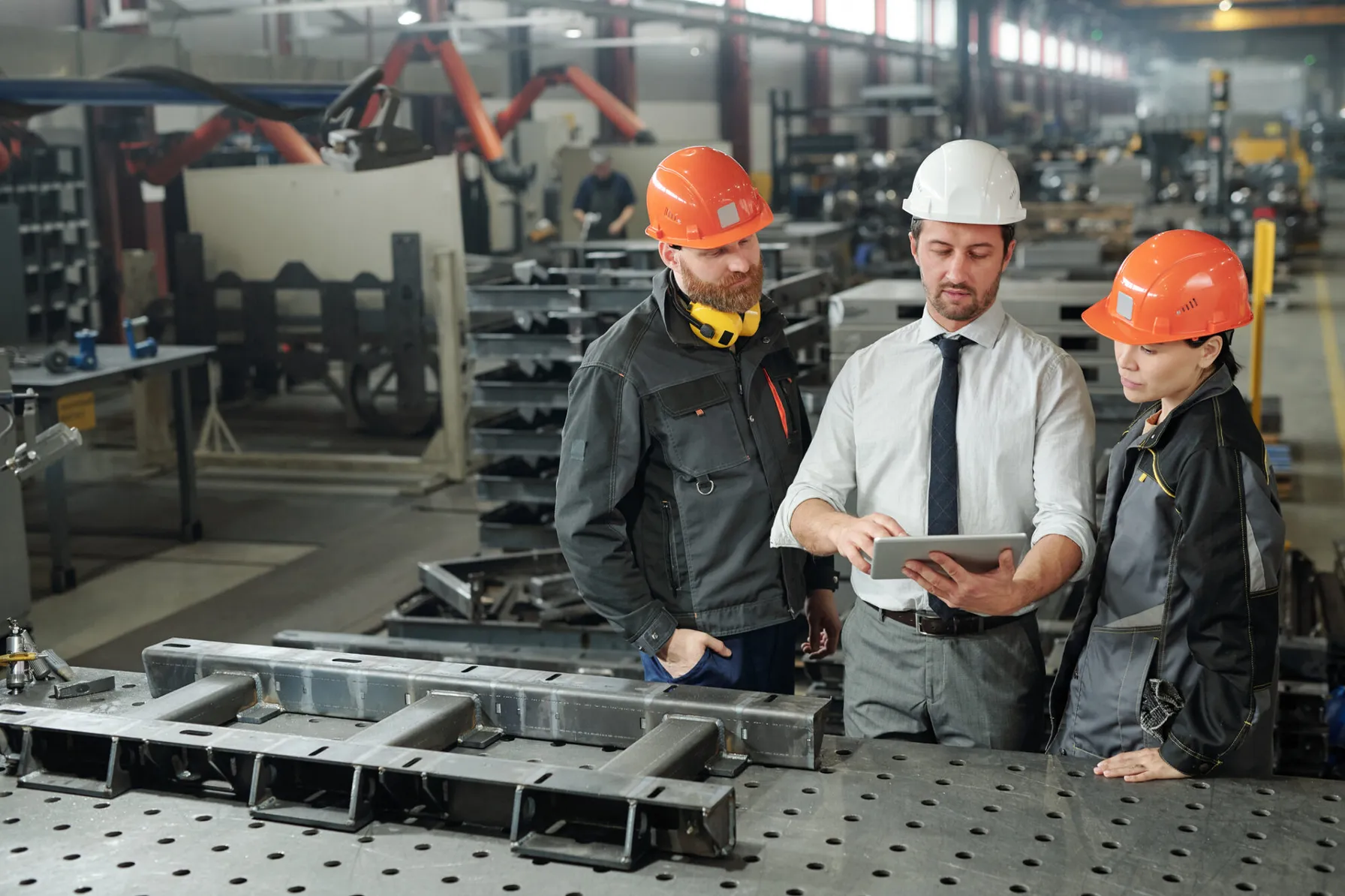Agrivoltaic systems are an emerging solution to help improve crop yields while generating renewable energy for various operations. These systems are more sustainable than traditional agriculture methods and help maximize land use. Agrivoltaics has many benefits for farmers, such as protecting against climate disruptions.
These systems can help address climate change impacts, growing food demands and increasing energy costs. Understanding how to create a sustainable agrivoltaics system can help you maximize your energy production and crop yields to combat challenges in the agricultural industry.
Request an Environmental Assessment

What Is Agrivoltaics?
Agrivoltaics, sometimes known as agro-solar, is a solution that helps combat the demand for sustainable energy worldwide. Agrivoltaics combines solar and agriculture activities to reduce land-use conflicts between solar farms and farmers.
The combination of solar and agriculture systems helps create a natural method for food production while supplying clean energy. The systems work together for energy generation and food production, which helps maximize land use. These systems can also be utilized on smaller scales, meaning that agrivoltaics resources can reach rural locations with limited solar access. Agrivoltaic solutions help increase productivity and profitability, making them an ideal way to reduce land conflicts.

How Does an Agrivoltaic System Work?
Understanding how agrivoltaic farming works starts with understanding traditional farming practices to determine their differences. Innovations in technology can help assist with food production worldwide, but these technologies need to be accessible to be viable in the agricultural industry.
Combining solar-powered greenhouses with agrivoltaic farming can help increase crop yields. The higher yields are the result of utilizing a sustainable energy source. Higher yields also increase profits for farmers since they can meet demand.
Agrivoltaic systems raise ground-mounted solar systems, allowing animals, equipment and people to pass underneath so they can cultivate crops and livestock. Various crops can be grown under solar panels, including potatoes, kale, peppers and broccoli.
Growing crops under solar panels help protect them from the intense midday sun, and they become evaporative coolers. The plants let water escape from their leaves, which helps create a cooler microclimate. Typically, solar panels can lose their efficiency if they are constantly sitting in the blazing sun, but solar panels can perform better due to the microclimate created by the plants. In return, the solar panels help protect the plants from dehydration and sunburn. The result is more efficient solar performance and a higher crop yield.
Benefits and Challenges of Agrivoltaics
Agrivoltaic systems benefit solar producers and farmers, generating more crop yields and higher energy production. However, there are still some drawbacks to consider. Below, you’ll learn more about the benefits and challenges of agrivoltaics.
Benefits
Some of the notable benefits of agrivoltaics include:
- Mutual benefits: One of the main benefits of agrivoltaics is that this system doubles the use of the land, helping generate clean electricity while producing high crop yields. Agrivoltaics systems also help protect crops from excess sunlight or extreme weather, and the evaporation from the plants helps cool down the solar photovoltaic (PV) panels to keep them performing at peak efficiency.
- Conserved water supply: Water scarcity is a significant concern in many places, and agrivoltaics systems can help. Solar panels can cover crops, reducing the water they lose and helping save water used in farming. Agrivoltaics projects are ideal for locations that commonly experience droughts or need to reduce their water consumption. The limited evaporation that still occurs helps cool solar PV systems, helping improve their overall efficiency.
- Performance in hot and dry regions: If you’re trying to grow crops in a hot and dry climate, you can face challenges with intense sunlight and dry soil. Agrivoltaics systems help combat this challenge by shading crops and the earth so the ground can retain water. These systems can significantly increase crop yields in challenging climates.
- Increased food production: One of the most notable benefits of agrivoltaic systems is that they can improve overall crop yields. Solar PV systems help protect crops, which allows farmers to generate a more significant yield each season, boosting profits and helping meet demand.
- Improved renewable energy production: Agrivoltaics systems help improve energy production since the evaporation from the plants underneath the solar panels cool the system so they can perform at peak efficiency. Traditional solar farms get substantially warmer throughout the day, which can reduce their life span and overall efficiency, so agrivoltaics systems help prevent these problems.
Challenges
While there are many benefits of agrivoltaic resources, there are also some challenges to consider, including:
- High upfront costs: Agrivoltaic systems have higher upfront costs than traditional roof-mounted PV panels. Since these systems need to be installed to a specific height, they require more complex mounting configurations that can cost three times more than a traditional PV installation. Additionally, agrivoltaics require deeper foundations to improve the PV units’ stability, especially during harsh weather conditions.
- Incompatible with some crops: Some crops won’t perform well when planted under solar PV panels. For example, wheat isn’t particularly compatible with these systems since this crop requires much sunlight to grow. However, even if the soil below the solar panels isn’t suitable for crop growth, small livestock can still graze underneath the solar panels, allowing the setup to still serve a dual purpose.
- Need to adapt cultivation practices: The crop type can contribute to a reduced yield if you try to use traditional cultivation practices. Farmers will need to adjust their cultivation methods to grow underneath solar panels. Producers are also looking to adapt their tools to farmers’ needs.
Creating a Sustainable Agrivoltaics System
Creating a sustainable agrivoltaics system ensures the best crop yields and energy production. Below are the steps you can use to create a sustainable setup.
1. Assess Your Land and Resources
The first step of creating sustainable agrivoltaics systems is assessing your available land and resources. Consider the following factors to ensure you’re choosing suitable land and resources for your agrivoltaics installation:
- Determining land suitability for agrivoltaics: You should ensure your soil is ideal for plant growth and allows for the construction of deep foundations for the solar panels. Some soil types will be incompatible with crop growth, and you may need to find additional land to accommodate an agrivoltaic system. The right land will help yield more crops while reducing the strain on your solar system.
- Evaluating water and energy resources: If you have a limited water supply or are in an area prone to droughts, agrivoltaics systems can be a good choice since these setups help reduce the overall need for water. If you have limited energy resources, agrivoltaics can also be beneficial since they can generate the energy you need for your operations.
- Assessing the current state of the land: If your land cannot yield the crop growth you desire or can’t bear the weight of deep foundations, you may need to find ways to change the land to help make your agrivoltaics project more successful and long-lasting.
2. Design Your Agrivoltaics System
Once you’ve determined that you have suitable land and resource needs to justify an agrivoltaics system to improve your sustainability, the next step is to design your setup, which includes finding the right solar panels and choosing the right crops. Some of the factors to consider when designing your project include:
- Choosing the right solar panels: First, you’ll want to look into the different solar panels on the market. Some solar panels can generate more power than others, and some have longer life spans. You’ll want to find solar panels that produce as much energy as you need for your operations while ensuring they last as long as possible. Many solar installers also offer warranties between 10 to 25 years, so you can rest assured that your solar system is protected if any components stop working or are installed incorrectly.
- Deciding on the placement of panels: Solar panels should be oriented to get as much sunlight as possible. With an agrivoltaics system, you’ll also want to ensure your panels are providing plenty of protection for the crops.
- Choosing the right crops to grow under the panels: Many plants can thrive when planted underneath solar panels, especially those that flourish in cooler seasons. However, other crops may not do as well when grown under solar panels, such as wheat, which requires high and consistent levels of sunlight. You should pick crops that can become damaged from intense UV rays or need cooler growing environments since solar panels will help protect these and maximize their yields.
3. Implement the Agrivoltaics System
After you’ve designed your setup and determined the logistics for your crops, it’s time to implement your agrivoltaics. The steps for implementing your system include:
- Installing the solar panels: Solar installers can manage the installation of your solar panels based on your chosen orientation. These professionals have the necessary skills and expertise to install solar panels correctly, ensuring you can maximize the potential of your solar investment. Solar installers can also recommend orientation and maintenance so you get the most from your solar installation.
- Planting and maintaining crops: You should monitor your chosen crops to determine their performance under your solar panels. You may need to adapt your cultivation methods depending on their performance. Ideally, you won’t need to water your crops as often with an agrivoltaics system, but you still want to monitor the water content of the soil to ensure your crops are getting enough hydration to grow.
- Monitoring the system’s performance: This monitoring includes checking your solar panels to determine their energy production and monitoring your crops to see if your yields are increasing. If your solar panels aren’t performing at their peak efficiency, contact your solar installer to determine the root cause. You may need to change your cultivation methods if you’re not yielding crops at the same level or more than traditional farming methods.
4. Measure the Success of Your Agrivoltaics System
Once you’ve implemented your agrivoltaics system, start measuring its success to determine if you need to make any changes. Some of the ways you can measure the success of your system include:
- Collecting data on energy production and crop yield: The primary reason to use agrivoltaics systems is to increase energy production and crop yields, so these are the two most essential factors to measure. Determine whether you’re getting as much energy as predicted from your solar panels and whether your crop yields are increasing. If your results are less than expected, you may need to change your system.
- Evaluating the return on investment: If your solar panels are generating plenty of energy and you’re increasing your crop yields, you should see a return on your investment. However, if production is lower than expected, you could change your agrivoltaics system to make it more successful.
- Assessing the environmental impact: You’ll also want to determine the ecological impact of your agrivoltaics system. A well-performing system positively impacts the environment, reducing water usage, generating clean energy and maximizing the land potential. Assessing the environmental impact of your agrivoltaics system can help you determine if it’s successful.
Tips for Successful Agrivoltaics Farming
Agrivoltaics farming can be an excellent way to increase crop yields and profits while creating clean energy and improving the environment. The following tips can help you make your agrivoltaics farming solutions more successful:
- Choose the right location: You’ll want to consider the climate to ensure it’s appropriate for solar production and your chosen crops. The right location will have plenty of sunlight for solar production and good soil for crop growth.
- Plan the layout: You’ll also want to plan the design to ensure your solar panels get the most sunlight. Solar panels can last up to 35 years, so you’ll want the layout to be right to ensure you’re boosting your energy production for as long as possible.
- Collaborate and partner: All the involved groups need to communicate and understand each other so the project is successful. For example, you’ll need to communicate with your solar installer so they understand your goals, ensuring you get the most from your solar system.
Start and Manage Your Agrivoltaics Project With TRC Companies
If you’re considering starting an agrivoltaics project, TRC Companies can help. We offer environmental, health and safety (EHS) management services to ensure you’re proactively managing any risks or hazards throughout the life span of your project. We also offer procurement and construction services to help your project stay on schedule, reducing risk and minimizing costly delays. You can also use our specialized consulting services to help you manage the complexity of agrivoltaics projects, from permit challenges to community acceptance.
We can help you manage your project from start to finish, ensuring you get your desired results quickly. We serve various clients and industries and can help you find environmentally focused solutions for all your projects. Contact us today to learn more about the benefits of our services!

Achieve New
Possibilities
Partner With TRC’s Tested Practitioners






















